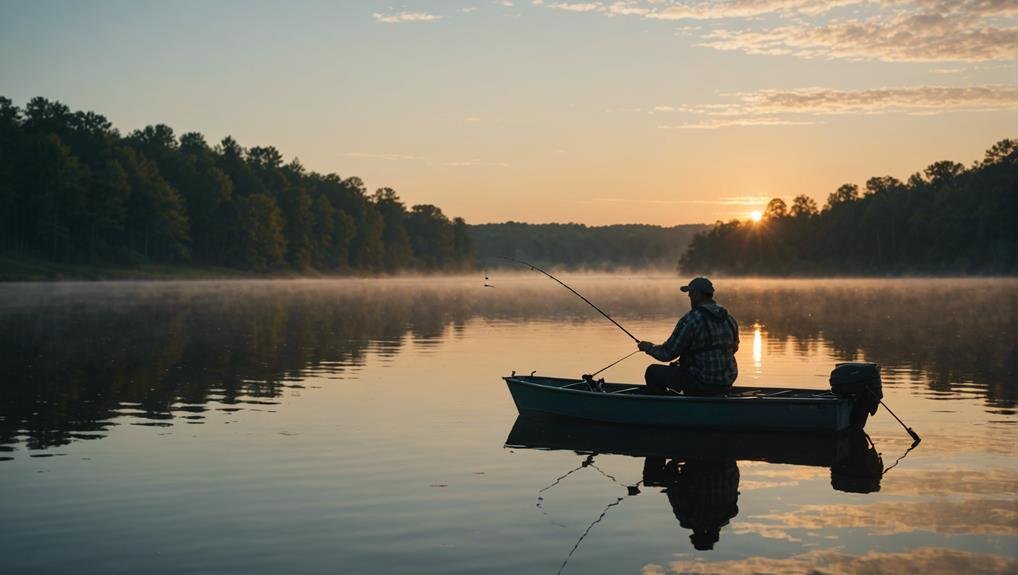When you’re gearing up for a crappie fishing trip, knowing the differences between Black and White crappies can make all the difference. You’ll want to choose the right gear, like ultralight rods and small jigs, to improve your chances. Techniques such as vertical jigging or trolling can also be game-changers. But that’s just the beginning; understanding the best baits and seasonal patterns is essential. Planning your trip with local regulations in mind guarantees a smooth and enjoyable outing. Are you curious about the top locations in Texas and how to maximize your experience? Let’s explore further.
Key Takeaways
- Use ultralight rods under 7 feet with 4-6 lb test lines for best sensitivity.
- Vertical jigging with small jigs and live minnows is an effective bait technique.
- Adjust fishing techniques based on seasonal patterns for optimal results.
- Black crappies prefer clear, vegetated waters; White crappies thrive in muddier environments.
- Texas regulations include a daily bag limit of 25 crappies per person, a minimum of 10 inches.
Types of Crappies
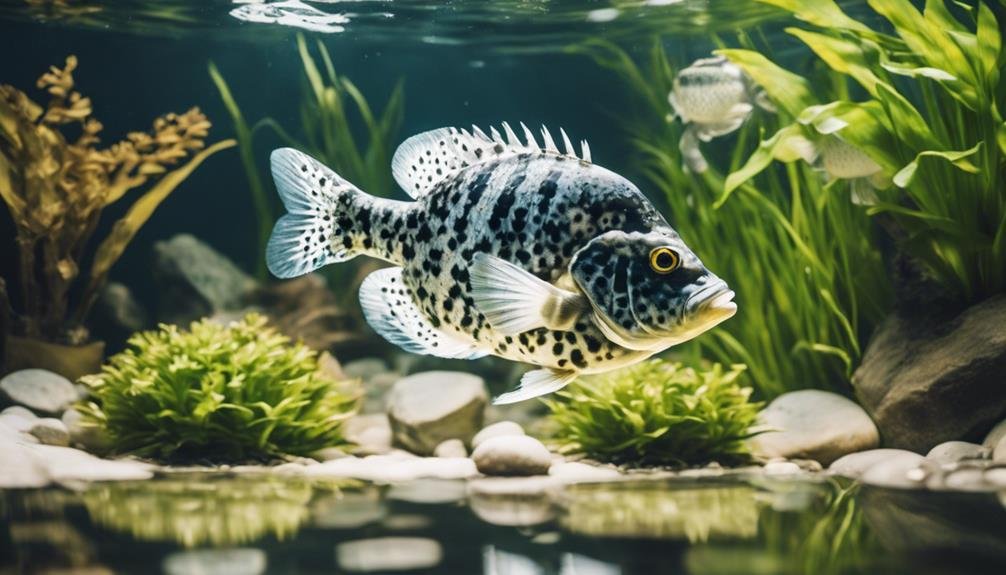
When you’re out crappie fishing, you’ll encounter two main types: Black Crappie and White Crappie. These two types of crappie are often found in different environments and can be distinguished by their physical characteristics.
Black Crappies have a darker coloration, which helps them blend into their preferred habitats of clearer water with heavy vegetation. This darker shade is complemented by their more numerous dorsal spines.
In contrast, White crappies are lighter and feature distinct vertical striping on their bodies. These stripes stand out, especially in the muddier waters where they thrive.
Despite their differences in colors and habitat preferences, Black and White Crappies have similar body shapes. They share a somewhat flattened, oval silhouette instantly recognizable to avid anglers.
When deciding where to fish, keep in mind that Black Crappies are more likely to be found in clear, vegetated waters, while White Crappies are better adapted to muddier environments.
Understanding these key differences can greatly enhance your crappie fishing experience. Whether you’re targeting the darker, more elusive Black Crappie or the easily spotted White Crappie, knowing their preferences and distinguishing features will help you become a more successful angler.
Essential Gear
You’ll need the right gear to maximize your chances of catching both Black and White crappies. Start with ultralight fishing rods that are less than 7 feet long and have fast action. Due to their high sensitivity, these rods are perfect for detecting the subtle bites of crappies.
When it comes to lines, opt for 4-6 lb test lines. Light lines like these enhance sensitivity, making it easier to feel those delicate nibbles. You have a few line options: braid, monofilament, or fluorocarbon.
The braid is excellent for its strength and minimal stretch, which improves sensitivity. Fluorocarbon, on the other hand, is nearly invisible underwater, making it ideal for clear water conditions. Monofilament offers a balance of sensitivity and stretch, making it a versatile choice for various fishing scenarios.
If you’re targeting larger Crappie species, consider using a heavier rod. Heavier rods provide the strength needed to handle bigger fish without compromising sensitivity. However, stick to light lines to maintain that critical sensitivity.
With the right combination of rods and lines, you’ll be well-prepared to catch Crappie effectively.
Best Techniques
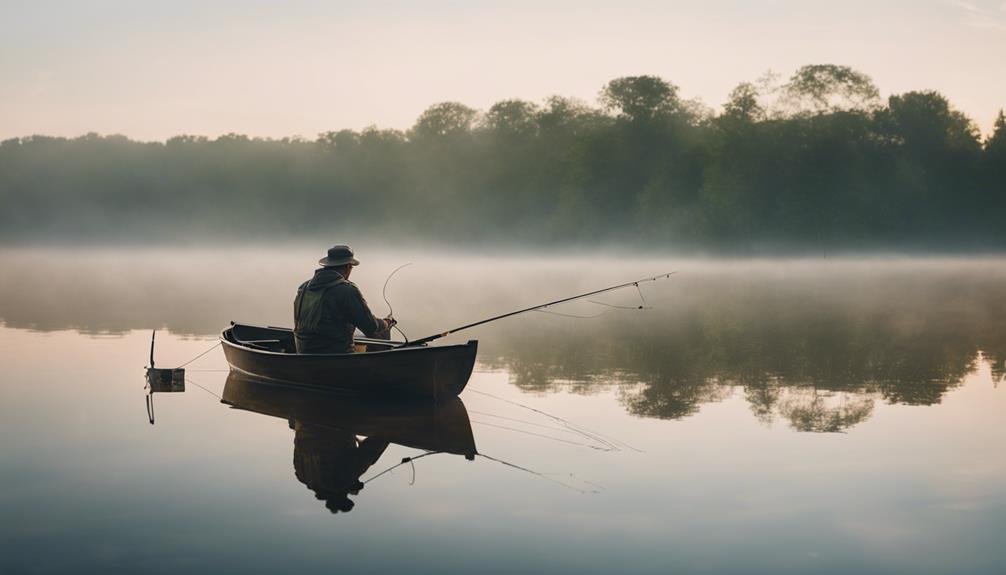
Mastering the best techniques for Crappie fishing can greatly enhance your catch rate and overall fishing experience. One of the most effective methods is vertical jigging with small grubs or jigs. This technique lets you precisely target crappies by dropping your lure straight down into their strike zone.
Remember to keep your bait above the crappies when fishing in shallow waters, as they tend to hunt from below.
Experiment with bait colors and depths to discover what works best in different conditions. Sometimes, a slight change in color or depth can make a significant difference.
Here are some key techniques to improve your Crappie fishing success:
- Vertical jigging: Use small grubs or jigs to target crappies directly.
- Experiment with bait: Try various colors and depths to find the most effective combination.
- Trolling with small crankbaits: Use lures like Bomber Fat-Free Shad to cover more water and locate active crappies.
- Electronic fish finder: Utilize this tool to locate crappies when they’re not in shallow waters and adjust your fishing strategy accordingly.
Optimal Baits
Selecting the best baits for Crappie fishing can dramatically increase your success on the water. Live minnows are among the top bait options, providing a natural and irresistible temptation for Crappie. Alongside minnows, worms also work well, especially when you need a change.
Jigs are another excellent choice, with sizes like 1/16 oz, 1/32 oz, and 1/8 oz being the most effective. Crappies often swim above, so keeping your bait or lure slightly elevated can lead to more successful catches. Vertical jigging is a proven technique, particularly in colder water conditions, where crappies tend to gather in deeper areas.
Experimenting with various colors, sizes, and presentations of your bait can make a significant difference. Bright colors often attract Crappies, but it’s essential to try different hues to see what works best on any given day. Mix up your jig sizes and experiment with other ways to present your bait to keep the fish interested.
Seasonal Tips
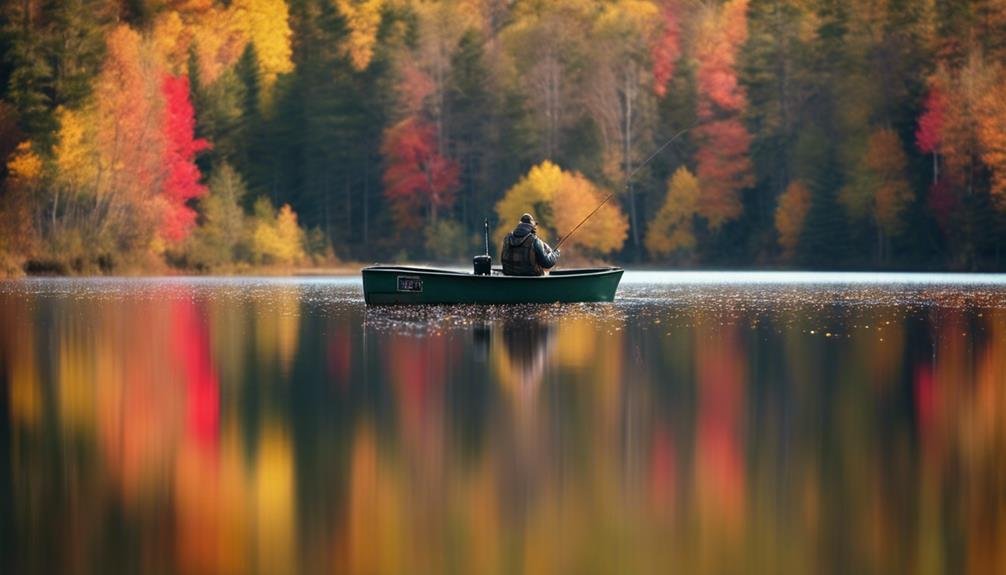
Understanding Crappie’s seasonal patterns can greatly enhance your fishing success. Adjusting your tactics to match their behavior means that each season offers unique opportunities and challenges.
In spring, crappies move into shallow waters for spawning. This is a prime time to catch them as they’re more accessible and active. Use small jigs or minnows near the banks and around submerged structures.
During summer, the heat pushes Crappie to suspend in schools around structures like brush piles or docks. You’ll need to employ techniques like vertical jigging or using slip bobbers to reach these fish effectively.
Fall brings cooler temperatures, driving Crappie into deeper water. They’re actively feeding to prepare for winter, so look for them around drop-offs or underwater ledges and use heavier jigs to reach them.
In winter, crappies can be found in suspended schools in deep water. It’s challenging but rewarding if you’re patient and precise. Use electronics to locate their schools and slowly present your bait.
Adjusting your gear and techniques based on these seasonal tips will increase your chances of a successful Crappie catch throughout the year.
Top Locations
When looking for top crappie fishing locations, Cedar Creek Lake in Texas should be high on your list. Located just an hour southeast of Dallas/Fort Worth, Cedar Creek Lake is famous for its excellent crappie fishing opportunities.
The lake’s abundant cover and structure make it a prime habitat for crappie, attracting anglers from all over.
To make the most of your experience, consider booking a guided fishing trip with BigCrappie.com. Owned and operated by Chuck Rollins, BigCrappie.com offers expert guidance for anglers of all levels.
Chuck specializes not only in crappie fishing but also in white bass and hybrid-striper fishing, ensuring a diverse and rewarding outing on the lake.
A guided trip with BigCrappie.com isn’t just about catching fish; it’s about learning valuable fishing techniques and boating safety. Chuck Rollins’ expertise and local knowledge make a difference, especially if you’re new to the sport or unfamiliar with Cedar Creek Lake.
These all-inclusive family fishing experiences are perfect for creating lasting memories while honing your fishing skills.
Fishing Regulations
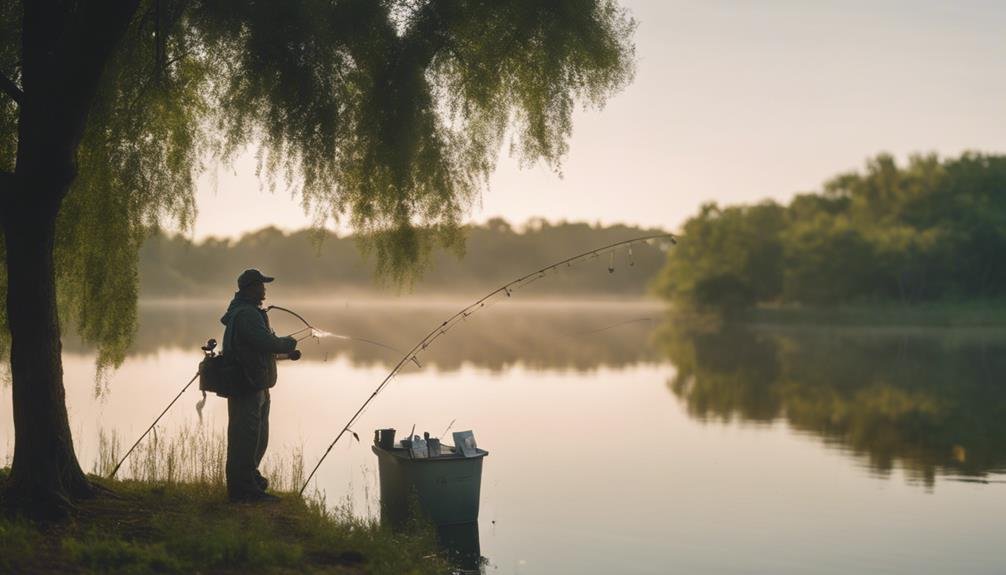
Fishing regulations for crappie in Texas are crucial to know before you cast your line. To guarantee you have a successful fishing trip, you need to be aware of the Texas daily bag limit, which allows you to keep up to 25 crappies per person, with each fish measuring at least 10 inches long.
However, there are Lake Fork exceptions to keep in mind. From December 1 to the last day of February, there’s no size limit for Black and White crappies at Lake Fork.
If you’re a non-resident, you’ll need a $58 fishing license, valid until August 31st of the same year.
Understanding the Crappie spawning season, starting in central and southeast Texas as early as February, can also help you plan successful fishing trips.
Here’s a quick summary to keep in mind:
- Texas daily bag limit: 25 crappie per person, minimum 10 inches.
- Lake Fork exceptions: No size limit from Dec 1 to end of Feb.
- Non-resident fishing license: $58, valid until August 31st.
- Crappie spawning season: Starts as early as February in central and southeast Texas.
Knowing these Crappie fishing regulations will help you make the most of your Texas fishing trips.
Planning Your Trip
Planning your crappie fishing trip in Texas starts with picking the right time, especially during the spawn in late winter and spring. The spawn is the best time to catch crappie as they’re more active and easier to locate.
Once you’ve nailed down your timing, focus on gear and tackle. A 1000- or 2000-series spinning reel paired with a 7 ft medium action light power rod and 4-8 lb test line will set you up for success.
Next, familiarize yourself with the crappie fishing regulations in Texas. The daily bag limit is 25 crappies per person, and the minimum length is 10 inches. Knowing these rules ensures you stay compliant and contribute to conservation efforts.
For the best locations, consider hotspots like Lake Fork, Sam Rayburn, and Lake Conroe. These lakes are renowned for their abundant crappie populations.
To wrap up, stay updated with the latest fishing news and tips by signing up for a FREE Monthly Newsletter from BigCrappie.com. These fishing updates can provide valuable insights and enhance your planning.
Enjoying the Experience

You’ll find that crappie fishing in Texas provides a thrilling and engaging experience for anglers of all ages. Whether you’re a seasoned fisherman or a newcomer, the excitement of reeling in these fish is unmatched. With the help of BigCrappie.com on Cedar Creek Lake, you’re guaranteed an unforgettable adventure.
Imagine the serene waters of the lake as you cast your line, waiting for that first bite. Using live bait, you might catch either a white or black crappie, both known for their spirited fight. The guides at BigCrappie.com provide you with the best gear and expert instruction, making your fishing trip both fun and educational.
- Serene lake views: The tranquil waters provide the perfect backdrop for a peaceful day of fishing.
- Exciting catches: Feel the thrill as you reel in crappie, Bass, and other fish.
- Top-notch equipment: High-quality rods, reels, and bait enhance your fishing experience.
- Expert guidance: Learn the best techniques and boating safety from knowledgeable guides.
Signing up for BigCrappie.com’s FREE Monthly Newsletter keeps you updated with the latest fishing reports and tips. You’ll get valuable insights, catch-of-the-week photos, and more, ensuring every trip succeeds.
Conclusion
Crappie fishing in Texas is incredibly rewarding if you know what you’re doing. With the right gear, techniques, and seasonal knowledge, you’ll increase your chances of a great catch.
Always stay updated on regulations and plan your trip carefully to guarantee a smooth experience.
Finally, take a moment to appreciate the serene beauty of Texas lakes while you fish.
Follow these tips, and you’ll enjoy every minute on the water. Happy fishing!
